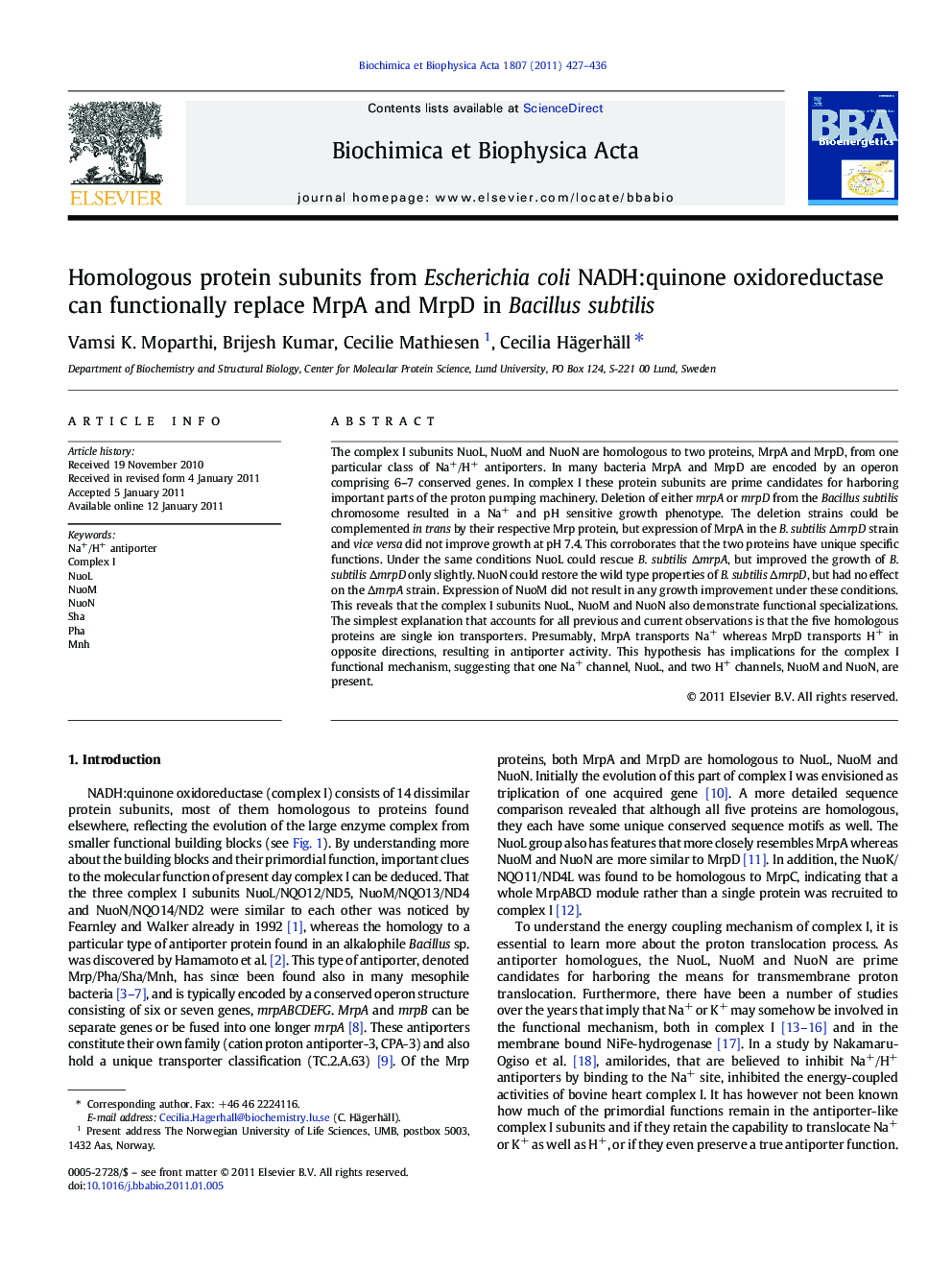| Article ID | Journal | Published Year | Pages | File Type |
|---|---|---|---|---|
| 1942625 | Biochimica et Biophysica Acta (BBA) - Bioenergetics | 2011 | 10 Pages |
The complex I subunits NuoL, NuoM and NuoN are homologous to two proteins, MrpA and MrpD, from one particular class of Na+/H+ antiporters. In many bacteria MrpA and MrpD are encoded by an operon comprising 6–7 conserved genes. In complex I these protein subunits are prime candidates for harboring important parts of the proton pumping machinery. Deletion of either mrpA or mrpD from the Bacillus subtilis chromosome resulted in a Na+ and pH sensitive growth phenotype. The deletion strains could be complemented in trans by their respective Mrp protein, but expression of MrpA in the B. subtilis ΔmrpD strain and vice versa did not improve growth at pH 7.4. This corroborates that the two proteins have unique specific functions. Under the same conditions NuoL could rescue B. subtilis ΔmrpA, but improved the growth of B. subtilis ΔmrpD only slightly. NuoN could restore the wild type properties of B. subtilis ΔmrpD, but had no effect on the ΔmrpA strain. Expression of NuoM did not result in any growth improvement under these conditions. This reveals that the complex I subunits NuoL, NuoM and NuoN also demonstrate functional specializations. The simplest explanation that accounts for all previous and current observations is that the five homologous proteins are single ion transporters. Presumably, MrpA transports Na+ whereas MrpD transports H+ in opposite directions, resulting in antiporter activity. This hypothesis has implications for the complex I functional mechanism, suggesting that one Na+ channel, NuoL, and two H+ channels, NuoM and NuoN, are present.
Graphical AbstractFigure optionsDownload full-size imageDownload high-quality image (29 K)Download as PowerPoint slideResearch Highlights► Protein complex formation of MrpABCDEFG is required for function only above pH 8. ► NuoL, NuoM and NuoN proteins from complex I could replace MrpA and MrpD in vivo. ► The MrpA and MrpD proteins are single ion transporters that together form an antiporter. ► Complex I probably contains one Na+ channel and two H+ channels.
